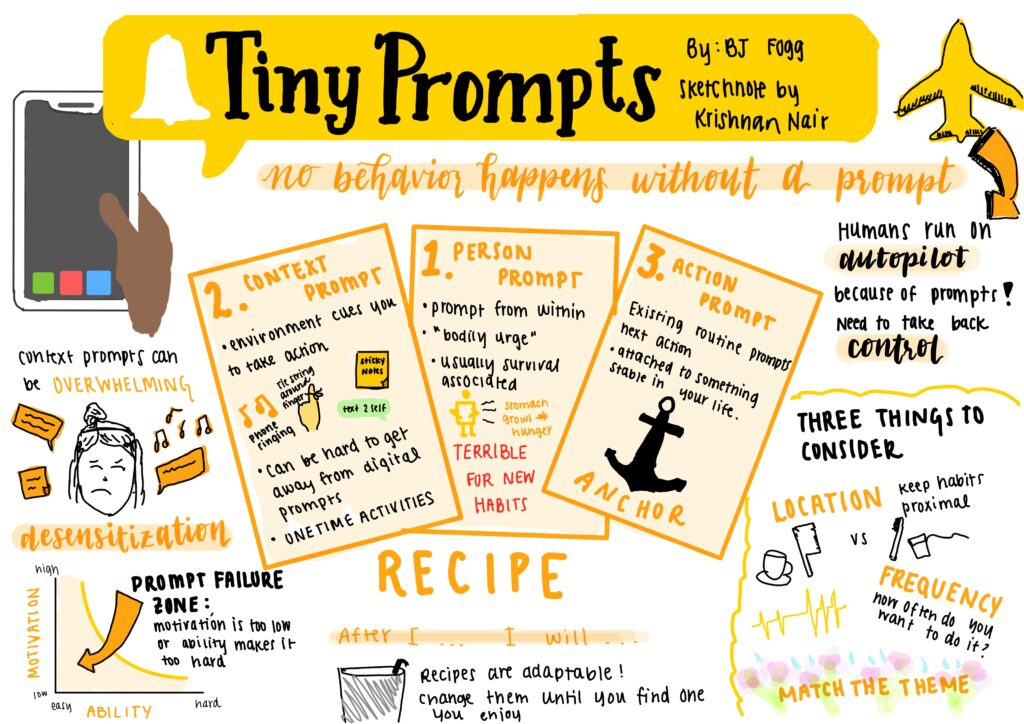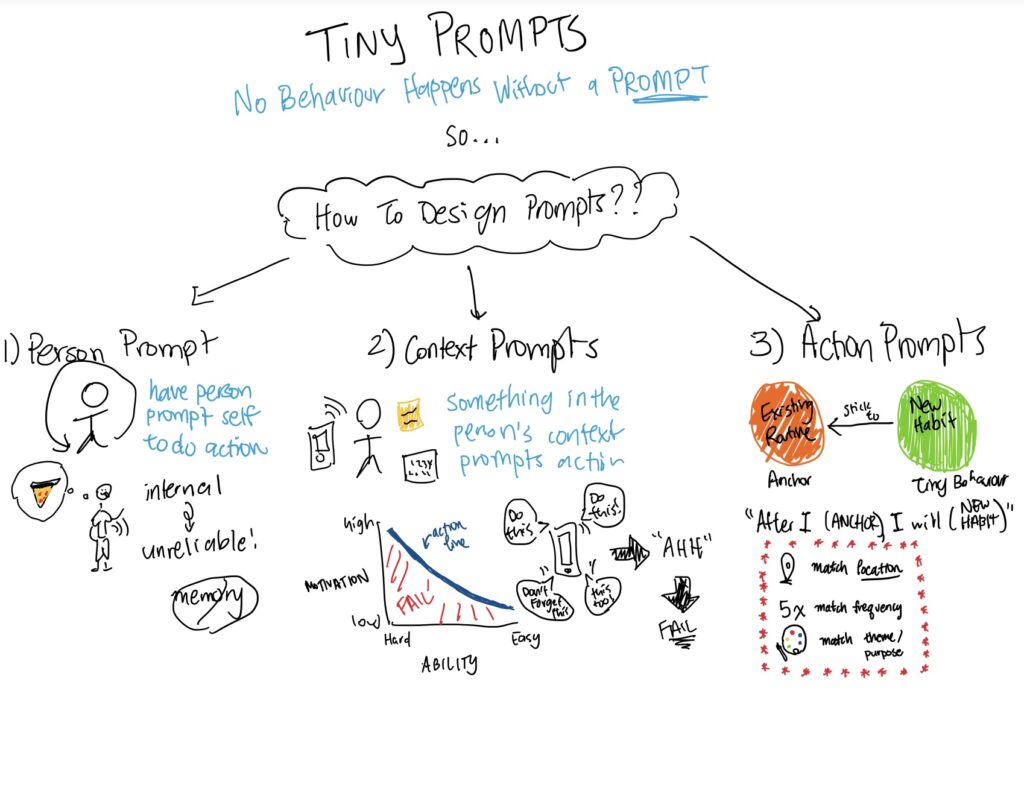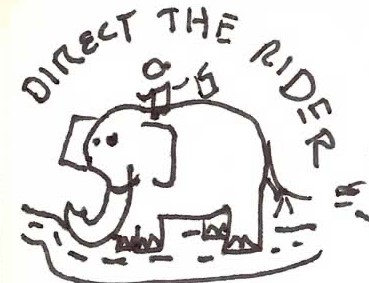Synthesis Process
After conducting the baseline study, we then translated our raw data into insights. We used several synthesis techniques to do this.
Coding our interviews and preliminary research
First, we coded our pre-study and post-study interviews and wrote key takeaways from each interview as well as overall trends we noticed from participants of our baseline study onto post-it notes. We also created post-its for key takeaways from our literature review and competitive analysis. Armed with these post-it notes, we moved into the next step of our synthesis process: chunking.
I. Affinity chunking and Frequency Mapping
1. Affinity chunking
We first drew insights from our sticky-note data by chunking similar stickies together and putting identical ones on top of each other. This step led us to find that many interviews reflected a desire to decrease their TikTok usage throughout the day, but did not identify their usage as a major problem to be addressed.
We also identified a continuous pattern of TikTok addiction stemming from personal user data collected from overuse of the app. Literature reviews we analyzed point to the ability of TikTok to create an “infinite scrolling” effect that balances a variety of “good” and “bad” content that hooks users for hours without knowing how much time has passed.
Our raw data from the baseline study also reflects this general sentiment, since across the study, users seemed to spend the most time scrolling through the app as their form of interaction, and report statements such as “I spent too much time [on TikTok] and it’s not productive” and “I felt like I was wasting time”. Users generally want to decrease their TikTok usage because they feel like it is unproductive to spend their time that way, but aren’t so unhappy with their usage to the point of stopping completely.
2. Frequency mapping
Based on some of the trends and topics we noticed from affinity chunking, we developed categories for our post-its and we rearranged our stickies by how often a topic is mentioned.
Frequency mapping led to us realizing that many of the takeaways from the baseline study revolve around sentiment and use patterns. These two categories had the greatest variation amongst users, while other considerations like productivity and alternatives had high consensus. This can be attributed to the diverse set of reasons for when and how people use TikTok, which can be further rationalized by how they feel while on the app. The pattern resulting from frequency mapping indicates that a better understanding of the sentiments tied to TikTok usage is critical to unpacking the behavior.
3. Graphing post-its on an X-axis of Negative-Positive sentiment, and infrequent->frequent occurrence of phenomenon on post-its
Ultimately, these synthesis techniques helped us realize that most of the insights we noticed from our interviews and baseline studies fell in the frequent and negative sentiments category about the app. This means that most of our users had frequent, but small complaints while using TikTok, so it was not enough to deter users from using the app, but they did still reflect negative feelings (about their usage and bad content displayed on the app) in general. In addition, users also had frequent positive experiences using the app (such as funny videos and social interactions sharing/making videos with their friends), which explains why they choose to use TikTok despite the negative sentiments. With these insights in mind, we noticed how for the majority of users, the negatives do not outweigh the positives. Keeping this in mind, we then moved on to developing user personas.
II. Personas
Our team first developed user personas based on our interviews and key insights from our synthesis process individually. In 4B’s class, we generated an empathy map based on all our users, and did not specifically focus on a target persona. The X-Axis of this map is discrete phases of TikTok usage: before opening, while using, and the prompt to close TikTok. The Y-axis is the classic empathy map categories: Feel, Do, Think, Say.
From this empathy map, we identified the following insights:
- Before users opened the TikTok app and when they were prompted to stop, users commonly felt bored and sought mediums for entertainment from work or class. Additionally, they were often alone prior to opening the app, lessening the importance of the “say” category.
- While using the app and once prompted to stop, common thoughts among our users were variations of: “I’ve been on this for too long” or “I should stop/It’s time to stop.” Users eventually self-regulated the amount of time spent on the app, but only once an extreme was reached. Almost none of the sentiments indicated moderate usage, which can be frustrating to users.
- Positive words about the app typically involved social elements, such as variations of “Did you see the TikTok I sent you?” or “Let’s do this dance together!” Generally, users were satisfied with the sentiment individually extracted from the app and wanted to incorporate that into a social medium.
These insights and this empathy map also led us to create more causal-relationship diagrams:
- Causal loop of the relationship between sleep and scrolling and productivity
- Causal loop of the relationship between TikTok and loneliness
- Causal loop of the relationship between TikTok and being bored and mindlessly opening social media
- Connection circle of the relationship between TikTok usage and socializing
These synthesis activities gave us the following insights:
- We found that there was a strong connection between certain users’ Tiktok usage and their sleep quality, which inevitably affected their daily lives. This seemed to be a great area for us to start exploring and create an intervention.
- We also saw that certain Tiktok usage patterns were rooted in negative emotions and only seemed to reinforce these negative feelings over and over again and promoted loneliness.
- Lastly, we saw that there seemed to be a high number of unintentional, habitual usage patterns of Tiktok where the users simply opened Tiktok because they were bored or wanted to “fill in the void” as opposed to intentionally wanting to go on Tiktok for specific content.
Then, we shared the personas we made individually with the group and synthesized personas into 3 key user personas. Synthesis was based on similarities including usage patterns, motivations behind using the app, and why the behavior is bothersome.
|
Name: Flip-flopping Fiona |
Project |
Team 1 |
|
|
Role: |
College student |
|
Goal |
Use TikTok less – especially before going to bed & after waking up |
|
|
Motivation |
I want to use TikTok less because I want my study/work sessions to be more productive without frequent distractions. I also want to use it less before going to bed because it affects how much sleep I get. I also use it extensively right when I wake up, which delays the start of my days and makes me more tired and unwilling to get up. |
|
|
Conflict |
It’s difficult to keep myself accountable because the negative consequences of continuing to use TikTok aren’t super bad – also, since all my friends use TikTok, I’m also more inclined to stay on it. Also, after I am done with my day and want to relax, I’m inclined to scroll on TikTok before I sleep to give myself some free/relaxing/enjoyable time. |
|
|
Attempts to Solve |
I’ve tried to put screen time limits on TikTok, but I end up ignoring it and staying on the app – it’s not too useful. |
|
|
Setting/ Environment |
I’m trying to solve the problem on my phone – where the app is native to. Physical location-wise, I’m trying to solve it in my room, where I do most of my work and get rest. |
|
|
Tools |
I have an iPhone, so I can use Apple’s native screentime limit feature. I can also download any apps that are available on App Store that might help with lessening my usage/ |
|
|
Skills |
Some skills that I have are writing, baking, and playing the violin. |
|
Name: Decrease Desires Daisy |
Project: |
Stop using TikTok |
|
|
Role: |
College Student at Stanford that uses TikTok daily, |
|
Goal |
Wants to reduce their usage of TikTok app in general |
|
|
Motivation |
Believes that TikTok is a mindless activity that takes up too much of her time. She uses the app for entertainment purposes and will open the app without much intention. |
|
|
Conflict |
Using TikTok has become a habit that she can’t break (developed over 3 years) |
|
|
Attempts to Solve |
Tries to replace the app with other ones such as Candy Crush |
|
|
Setting/ Environment |
Just in her day-to-day routine at home by herself |
|
|
Tools |
Uses her phone to play Candy Crush as a replacement to TikTok usage |
|
|
Skills |
Good at diverting her attention so that she’s not distracted for long periods of time, very aware of her abuse/usage on the app and how it makes her feel |
|
|
More |
|
|
Name: Everything in Moderation Emma |
Project |
Battling TikTok addiction |
|
|
Role: |
Student |
|
Goal |
Get entertainment during down time and to experience social interaction without putting in too much effort |
|
|
Motivation |
Living in a more anti-social dorm this year, Emma wants to entertain herself with easy social interaction, but struggles to easily reach out to others. So, she turns to TikTok, but ends up spending more time on it than she desires. She wants to use the app more in moderation than she currently does. |
|
|
Conflict |
Time that was supposed to be short winds up going longer than intended. She believes that TikTok is a waste of her time and negatively impacts her mental health, but cannot find a way to stop using it. Eventually winds up affecting sleep and my subsequent energy levels the next day |
|
|
Attempts to Solve |
She has used Apple’s screentime feature to place limits on her TikTok usage, but frequently turns it off to allow herself to scroll for longer. |
|
|
Setting/ Environment |
She watches TikToks only while alone, typically in her bedroom in her apartment. |
|
|
Tools |
She has an iPhone, a boyfriend, a large social circle |
|
|
Skills |
She is very hard-working and determined, as shown by her status as a premed Stanford student. She struggles to put these hardworking skills into breaking her TikTok addiction because she can only put effort into so many things. |
III. Journey Maps
Here are the journey maps we have created for each of our personas introduced above. The X-axis is divided into morning, mid-day, and evening of a single day. The Y-axis is separated into actions, emotions, and goals. We also created a line graph that represents the TikTok usage and the stress level, corresponding to morning, midday, and evening.
IV. Intervention Study
We developed our intervention study based on our user personas and journey maps. Below, we present our ideation process:
Initial ideas:
|
After we brainstormed the above ideas, we voted on them with our initials based on the following criteria: (Priority 1) Ability to break cycles in causal loop #3 and (2) Feasibility.
Our 3 ideas (with pros and cons) are listed below:
(1) Show a to-do list/google cal when you open tiktok or when you have been on it for a while.
Pros:
- Easy to redirect reminders to shortcut, feasibility
- Breaks concentration on TikTok
- Reminds people that they have priorities outside of TikTok
- Interrupts the circle between mindlessly scrolling and the mental cue to stop, so users can be prompted earlier
- Nudges users towards completing tasks and getting back on track
- Moderates usage so users can still get enjoyment from the app
Cons:
- May be ineffective if user is overworked from the day and they do not have a packed agenda for the day after
- May become numb to efficacy just like any other to-do list
(2) Duo push with one of your friends to approve you to open TikTok.
Pros:
- Tests the effectiveness of social pressure on Tiktok usage
- Social pressure to use TikTok less than an embarrassing amount of time
- Offers a new way to keep accountability while integrating a social element
Cons:
- Difficult to set up the shortcuts and control automation
- Dependent on friends’ participation to hold you to accountability
- Users may not want to use it at all because of extremely high visibility
(3) Timer while using the app to show how much time has been spent on the app (can be incremental).
Pros:
- Breaks your concentration on the app, decreasing mindless scrolling
- Nudges user to stop using the app themselves (individual responsibility)
- Helps user become more aware of their usage
Cons:
- User can’t see exact time that’s passed when using (timer goes off instead)
- Pretty similar to current intervention by the screentime app on iPhone/Android -> not super nuanced, might fail to break the cycle in the same way
- Easy for user to opt out of
How We Chose Our Idea:
The intervention idea that we decided on was to show the user’s to-do list or Google Calendar when they open TikTok. After deliberating the pros and cons of our top three ideas, we realized that Duo Push idea (#2) was difficult to implement in the short-term and was heavily dependent on the user’s friend’s participation. We also realized that the Timer idea (#3) accomplished similar goals as the existing Screen Time feature native on iPhones/Androids – due to this similarity and lack of nuance, we wanted to avoid potentially failing to break our feedback loop. Our To-Do list idea (#1) that we decided on was relatively feasible to implement, effectively breaks concentration on TikTok, and thus interrupts the loop between mindlessly scrolling and the mental cue to stop.
Recruitment:
We will each recruit one of our previous baseline study participants and a new participant that is representative of one of the target personas, “Flip-flopping Fiona”. The reason why we are pursuing this persona is because we felt that this persona represented the most extreme Tiktok usage, which presents us with the most viable problem-space, and wasn’t particularly well represented in our previous baseline studies. We recognize that our participants will most likely not perfectly align with our “Flip-flopping Fiona” persona, but hopefully, the intervention study results should still present us with interesting findings.
Intervention Study/Data to be Collected:
Setup: We will meet with our participants and ask them which mobile app they primarily use to keep track of their to-do items. Then, we will walk them through the process of using the Apple shortcuts app to add a shortcut that opens this app whenever they open TikTok.
Process:
After the initial setup, we will then send a Google form (see link for full set of questions) with similar questions as our Baseline study about participants’ screen time on TikTok and on their phone generally. We will send out this form daily to collect user’s usage data. The key questions we are trying to address fall under the qualitative effectiveness of our intervention idea and whether or not the intervention quantitatively decreased the users’ screen time on TikTok. For further detail, see Data section below:
Data:
- Impact of intervention study – qualitative
- Daily screen time usage – quantitative
|
|
Hours Spent On Your Phone Yesterday (ie. 1:30 hrs) Today |
Hours Spent On TikTok Yesterday |
On a scale from 1-10 (10=spent way too much time on TikTok Today), how much time did you spend on TikTok yesterday? |
How did the intervention make you feel throughout the day? |
Did you spend more, less, or around the same amount of time on TikTok yesterday? |
Did the intervention positively or negatively impact your day? If so, why? |
Did the intervention negatively impact your day? If so, why? |
How would your TikTok usage have been without the intervention? |
|
Day 1 |
|
|
|
|
|
|
|
|
|
Day 2 |
|
|
|
|
|
|
|
|
|
Day 3 |
|
|
|
|
|
|
|
|
|
Day 4 |
|
|
|
|
|
|
|
|
|
Day 5 |
|
|
|
|
|
|
|
|
Goals:
We hope that the consistent reminder of “to-do” tasks will help users break out of the causal loop and reduce their daily usage, particularly before they go to sleep.



